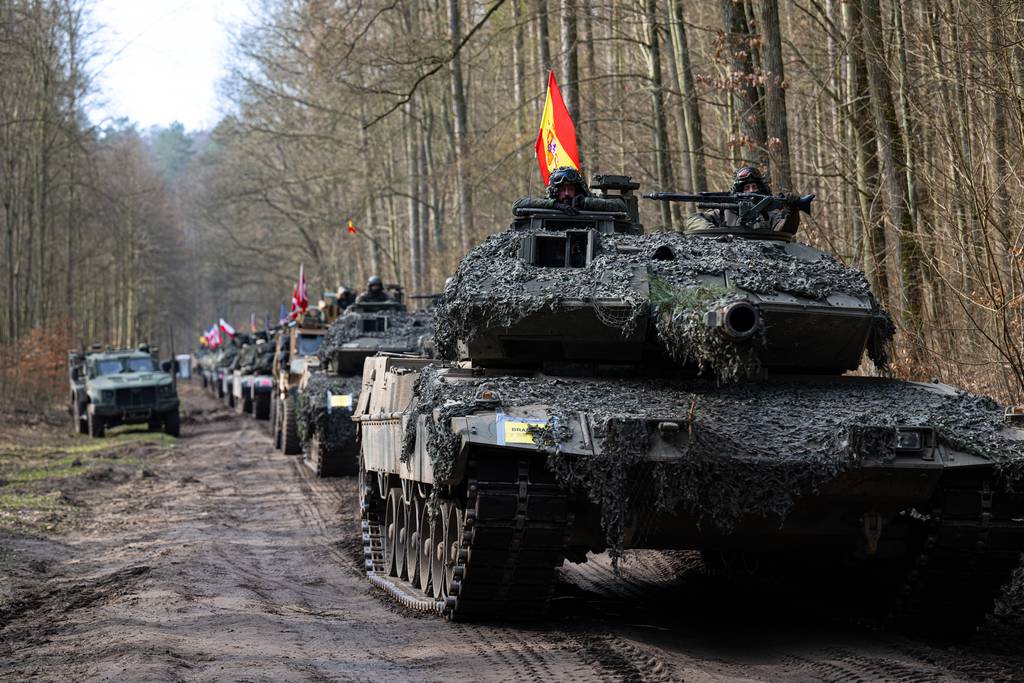Korzeniewo, POLAND – “We are ready.”
The three-word statement was highlighted in bold letters at the opening of NATO’s March 4 briefing, on the occasion of the Polish-leg of the alliance’s largest military exercise since 1988.
But even amid the resolute and calm tone of officials in the room, there was a palpable sense of apprehension among reporters.
A core theme of the speeches presented by NATO representatives revolved around transparency, specifically in showcasing what the Steadfast Defender exercise — and its subsidiary drill Dragon, led by Poland — would involve. Yet many were wary of answering questions related to Russia or lessons learned from the war in Ukraine.
On several occasions, officials were pressed about whether they had concerns over revealing their plans to Russia through events such as these, or even the possibility the Kremlin could intercept operational details.
“Of course we are concerned, everyone is concerned,” Brig. Gen. Gunnar Bruegner, assistant chief of staff at NATO’s Supreme Headquarters Allied Powers Europe, told Defense News. “[We need] to make sure we are safeguarding the critical information, but it does not relieve us from the requirement of making these exercises happen.”
“It is quite a balance you need to keep; you cannot showcase everything,” he said.
During a March 4 news conference, Maj. Gen. Randolph Staudenraus, director of strategy and policy at NATO’s Allied Joint Force Command Brunssum, told reporters that while the alliance does protect its communications, “we are also really trying to be transparent.”
The fine line between accountability and information security is one that some NATO members have recently grappled with. A notable example is the leak of a German discussion about potentially providing Ukraine iwth Taurus missiles. Russia intercepted audio from the web conference between German Air Force officials.
Through this, Moscow was able to get its hands on information regarding the potential supply of cruise missiles to Ukraine as well as operational scenarios of how the war could play out.
Russian officials said last month that the country views Steadfast Defender as a threat.
When it comes to that training event, Bruegner said, details provided to the media during briefings are meant to illustrate the bigger picture, but only in broad terms.
“The plans themselves and the details in there will not be made available to everyone. What you’re seeing here are slides NATO has unclassified,” he explained.
He also noted that an objective of the exercises is to showcase the integration of capabilities, and not necessarily what NATO would do in a contested setting.
“We for sure would not fly banners on the amphibious devices in a contested exercise, which would have involved having an opponent on the other side of the eastern benches of the river and would’ve looked different [than what we saw in the Dragon drill],” Bruegner said.
Elisabeth Gosselin-Malo is a Europe correspondent for Defense News. She covers a wide range of topics related to military procurement and international security, and specializes in reporting on the aviation sector. She is based in Milan, Italy.








